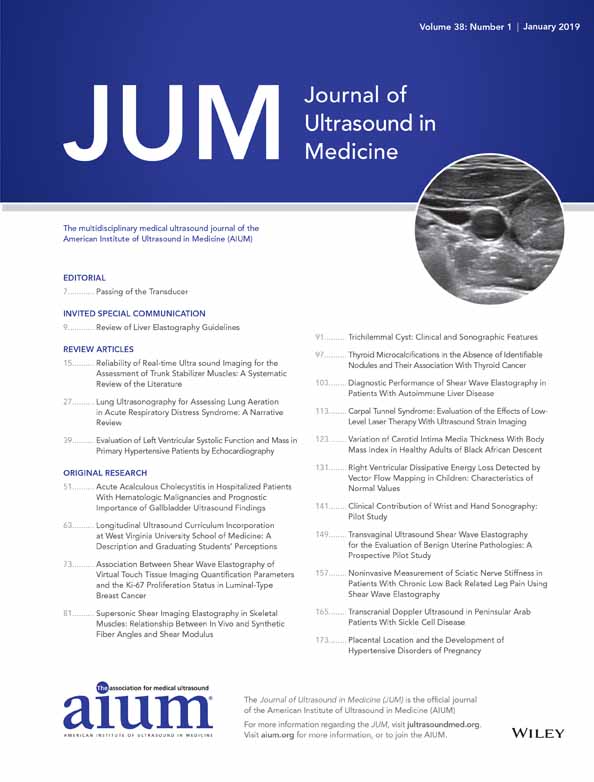Supersonic Shear Imaging Elastography in Skeletal Muscles: Relationship Between In Vivo and Synthetic Fiber Angles and Shear Modulus
The authors acknowledge FINEP (Financier of Studies and Projects), FAPERJ (Rio de Janeiro State Research Funding Agency), CAPES (Coordination of Improvement of Higher Level Personnel), and CNPq (National Counsel of Technological and Scientific Development) for support. Additionally, we acknowledge the Creative Commons Attribution License for permission of a part of Figure 3.
Abstract
Objectives
To verify a relationship between the pennation angle of synthetic fibers and muscle fibers with the shear modulus (μ) generated by Supersonic shear imaging (SSI) elastography and to compare the anisotropy of synthetic and in vivo pennate muscle fibers in the x2–x3 plane (probe perpendicular to water surface or skin).
Methods
First, the probe of Aixplorer ultrasound scanner (v.9, Supersonic Imagine, Aix-en-Provence, France) was placed in 2 positions (parallel [aligned] and transverse to the fibers) to test the anisotropy in the x2–x3 plane. Subsequently, it was inclined (x1–x3 plane) in relation to the fibers, forming 3 angles (18.25 °, 21.55 °, 36.86 °) for synthetic fibers and one (approximately 0 °) for muscle fibers.
Results
On the x2–x3 plane, μ values of the synthetic and vastus lateralis fibers were significantly lower (P < .0001) at the transverse probe position than the longitudinal one. In the x1–x3 plane, the μ values were significantly reduced (P < .0001) with the probe angle increasing, only for the synthetic fibers (approximately 0.90 kPa for each degree of pennation angle).
Conclusions
The pennation angle was not related to the μ values generated by SSI elastography for the in vivo lateral head of the gastrocnemius and vastus lateralis muscles. However, a μ reduction with an angle increase in the synthetic fibers was observed. These findings contribute to increasing the applicability of SSI in distinct muscle architecture at normal or pathologic conditions.




